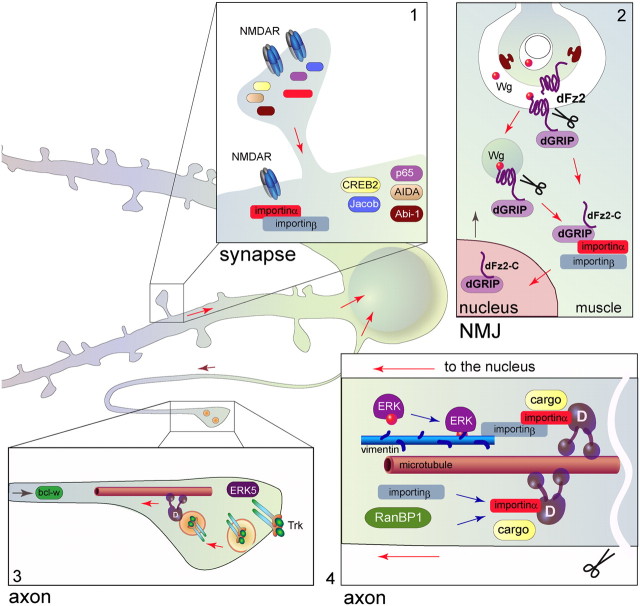Figure 1.
Schematic depiction of the different routes of long-distance signaling in neurons. Non-endosomal transport of macromolecular complexes frequently requires binding of importin α to the cargo as in synapse-to-nucleus (1), neuromuscular junction (NMJ)-to-nucleus (2), or axon-to-nucleus (4) communication. 1, A number of synaptonuclear protein messengers have been identified in recent years that can translocate to the nucleus in an activity-dependent manner. NMDA receptor activation plays a pivotal role for this type of communication. 2, Studies at the NMJ suggest that long-distance Wnt signaling is involved in the expression of genes that are required for building the postsynaptic apparatus. 3, The most investigated example of neuronal long-distance communication is probably neurotrophin signaling via Trk-containing endosomes in axons. This type of signaling involves MEF2D-regulated gene expression, including regulating expression of Bcl-w, a Bcl-2 family member that is crucial for axonal integrity in sensory neurons. 4, Following axon injury, retrograde transport of certain injury signaling molecules is based on direct interactions of cargo proteins with importin nuclear transport factors in complex with the retrograde motor dynein. In addition to importin β1, other components or regulators of this complex are also locally translated in axons after injury, such as vimentin, a binding adaptor for phosphorylated ERK, and RanBP1, a regulator of the importins–Ran system.

